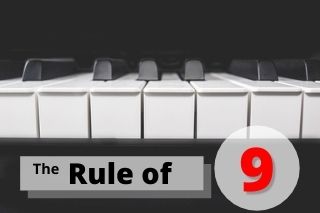The following two tabs change content below.


Greg Lee
Hi, my name is Greg Lee. I'm the creator of the Color Score Professional/Visual Chord Learning System. I love to share ideas and concepts about piano and keyboard playing in all styles of music. I believe the key to learning is having fun and making complicated things simple with visual tools and illustrations.
Latest posts by Greg Lee (see all)
- What is a minor/Major 7 Chord? - October 26, 2023
- 7 Chord Substitutions that Professionals Use - October 19, 2023
- 5 Simple Chord Tricks to Sound Amazing - October 5, 2023


 You may be aware that intervals are simply the distances between notes. Many beginning piano players aren't aware that you can have ascending or descending intervals.
You may be aware that intervals are simply the distances between notes. Many beginning piano players aren't aware that you can have ascending or descending intervals. But if you have the same C but have the G below it, it's no longer a 5th. It's an interval of a 4th. It's the same note, it's just inverted which changes the interval.
But if you have the same C but have the G below it, it's no longer a 5th. It's an interval of a 4th. It's the same note, it's just inverted which changes the interval.



 The sum total of both 7+2=9.
The sum total of both 7+2=9.
 The sum total of both 3+6=9.
The sum total of both 3+6=9.
